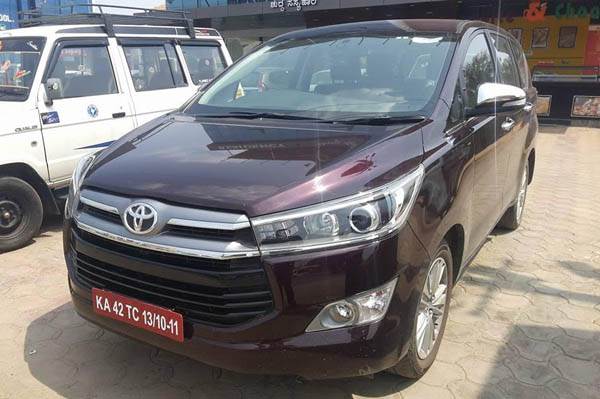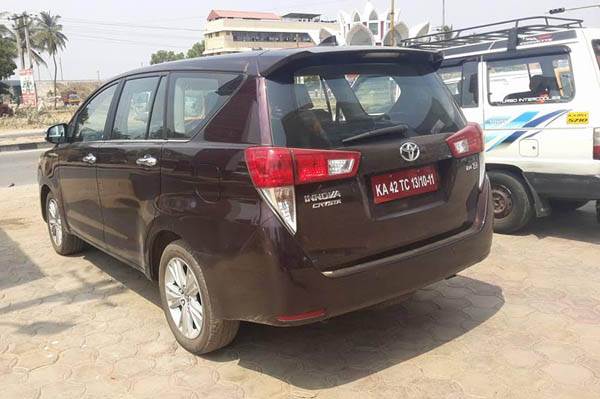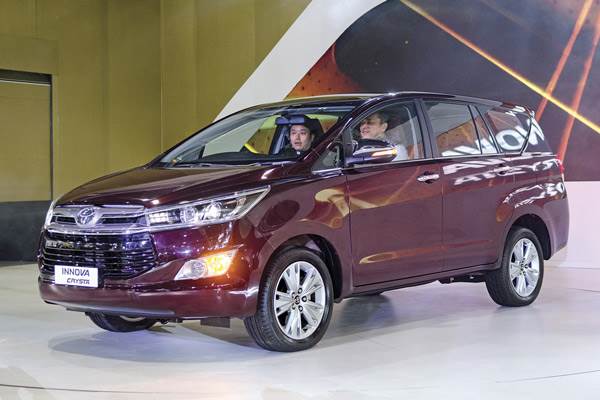It’s taken Toyota more than ten years to introduce a replacement for the Innova which, in today’s age of shorter lifecycles, makes the current car two generations old. However, age hasn’t bothered Innova buyers and for a car about to be phased out, demand is still strong.
Few cars evoke as much loyalty as the Innova which, after a decade of impeccable service, has garnered a huge fan following. Which is why Toyota was reluctant to tamper with a proven formula and the big conundrum for the Japanese automaker was how to improve on something that’s worked perfectly for years.
Not surprisingly, Toyota has played safe and the all-new Innova, which comes with a new suffix ‘Crysta’, is more of an evolution than a revolution. However, every part of the car has been changed, says Hiroki Nakajima, managing officer, Toyota Motor Corporation and the chief engineer of the Innova. “After ten years, we felt we needed to change the entire structure of the new Innova to meet all future legislations and, of course, customer requirements. There are no carry-over parts and even the body-on-frame is newly developed and a hundred percent new.”
KEEPING IT SIMPLE
Starting from a fresh sheet of paper, one would have expected Toyota to go in for a ‘hydroformed’ chassis, a trend even homegrown Tata Motors and Mahindra & Mahindra are following. But Toyota has stuck to a conventional tubular chassis. Hydroforming helps reduce weight, especially in heavy ladder chassis; so, why didn’t Toyota adopt this technology for the new Innova?
“Yes, hydroforming is a good way to reduce the weight itself. However, from the manufacturing point of view, we have to produce the same vehicle not only in India, but also other markets like South Africa, Argentina, Venezuela, etc. It can be very difficult to get the material for the hydroforming process in some countries and we have to then import it, which dramatically increases prices. So, we use a material that we can get easily and for that, we have decided to use the conventional method of construction,” explains Nakajima.
As a result, the new Innova is heavier than the outgoing one but Nakajima is not fussed by the approximately 200kg increase in weight and says, “We’ve changed the frame’s cross section size and torsional rigidity is a lot better; this has greatly improved riding comfort, one of our priorities.”
The new Innova also comes with the same 2750mm wheelbase as before and again, Nakajima didn’t want to tamper with what he considers is the perfect dimension. “I had many opinions on the wheelbase length, but size wise, what we have is ideal for India and other markets too.”
Toyota also uses an old-school hydraulically assisted power steering instead of the new electrically assisted ones. Again, the reason is not to compromise a shred of reliability. “From a quality and durability point of view, hydraulic steerings are better especially in rough road conditions where it is difficult to use EPS (electric power steering). Since the steering is shared between the Innova, Fortuner and Hilux, even the new Innova gets hydraulic steering”, explains Nakajima.
SPENDING WHEREIT MATTERS
Nakajima has spent his development budget wisely, which is where the customer can see it. Complementing the improved ride and handling are a pair of diesel engines which come with a huge increase in power and torque. Even the base 147bhp 2.4 diesel is 44.12 percent more powerful than the outgoing and outdated 2.5 motor, which makes the Crysta dramatically better to drive. “We reduced the displacement slightly to increase fuel efficiency but power and torque are much better now,” says Nakajima.
What will blow customers away are the interiors where Toyota has pulled out all stops. “We have focussed on improving the roominess, especially in the second row. Now, the distance between the driver’s seat and second-row seat has been increased from 980mm to 1000mm and this was a big challenge.” Did the 210mm increase in the overall length of the car help with the interior packaging? “The increase in length was more to do with meeting future pedestrian crash regulations.”
What Nakajima is particularly proud of is the dashboard, which now looks far more upmarket and luxurious. “We have a one-piece dashboard and the panel has one piece going from one end to the other. It’s made from one injection moulding piece,” says Nakajima proudly.
All this, however, points to a car that threatens to be more expensive than the outgoing one. Nakajima acknowledges that the material cost will be more than before but reassures us by saying, “We can’t disclose details of our costs but since we use several parts that are common between the Innova, Fortuner and Hilux, there shouldn’t be a big jump.”
That remains to be seen when the car goes on sale next month but the fact is that there are already people, blank cheques in hand, waiting in queue. Few cars can command their price the way the Innova does and with the new model, Toyota is all set to milk its new cash cow.







Comments
Member Login
Personal Details
No comments yet. Be the first to comment.